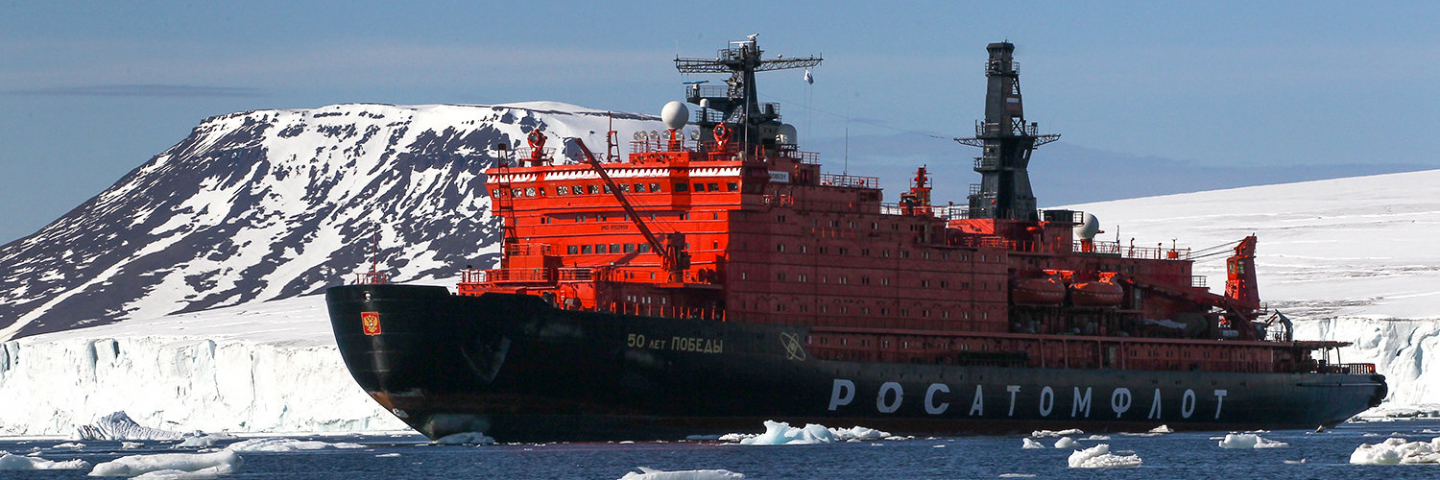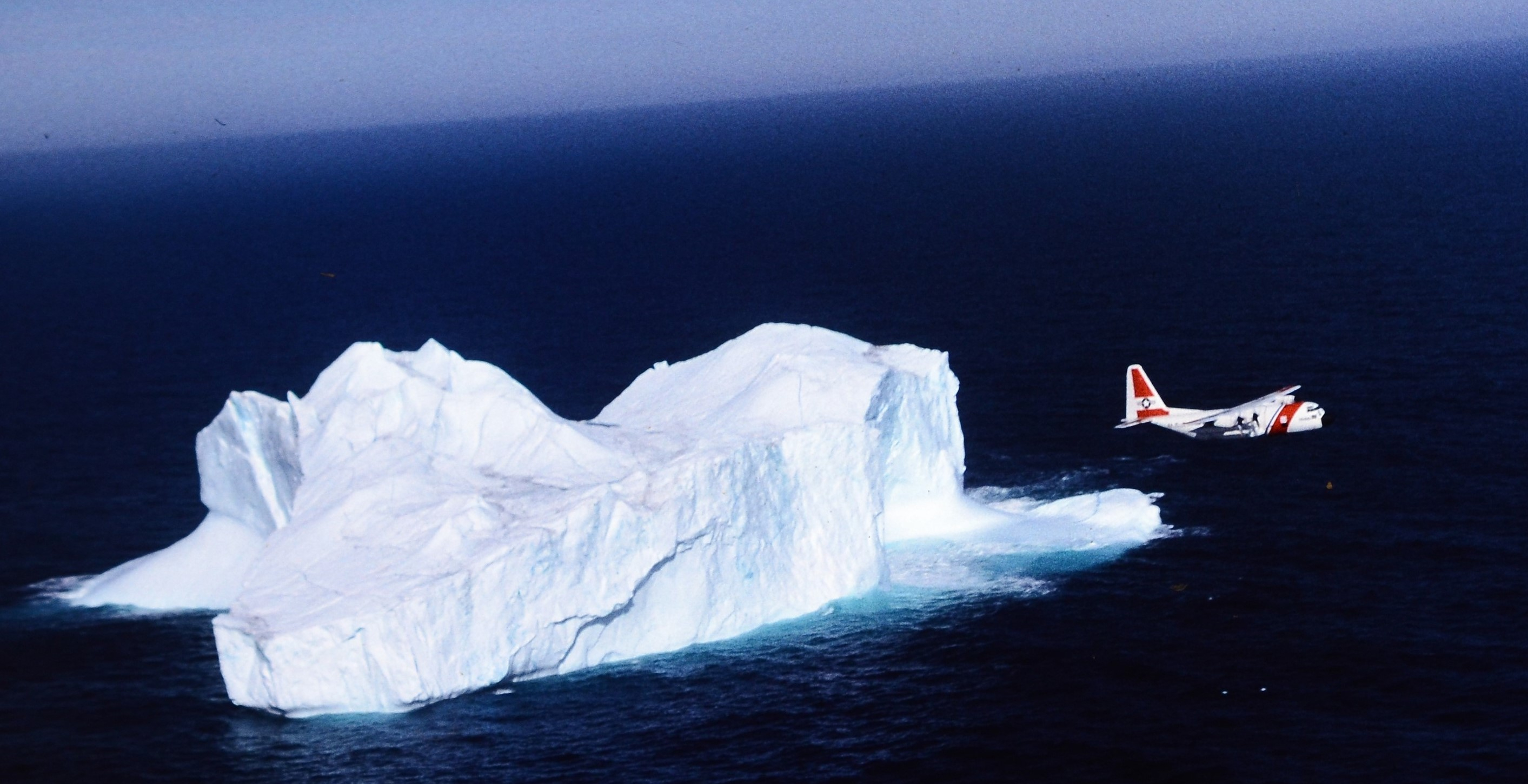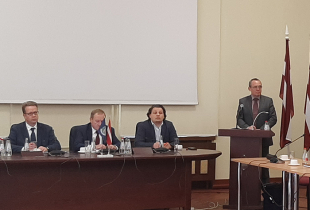
Russian Strategic Guidelines and Threat Assessments for the Arctic
Executive Summary
Russia has declared its commitment to international cooperation in the Arctic, but it has invested massively in the modernization of its nuclear arsenal concentrated on the Kola Peninsula and has consolidated its military positions in the Barents region and along the Northern Sea Route. The growing need to gain political advantage from this investment leads to the following escalation of risks:
- In the evolving confrontation with the United States and the North Atlantic Treaty Organization (NATO), the situation in the Arctic theater is rare for Russia, because the level of threats to its interests is low and its capacity for threatening the interest of NATO member states is high.
- Strategic nuclear assets of the Russian Northern Fleet are augmented by new capabilities for long-distance, high-precision missile strikes and protected by the air defense system, which amounts to extending the anti-access/area denial (A2/AD) “bubble” to the Western part of the Barents region.
- Russia’s new Arctic command puts its main emphasis in planning and training on amphibious operations supported by missiles strikes on shore, and one possible target for this power projection could be the undefended Norwegian Svalbard.
- Russia’s program for constructing new naval and air bases along the course of the Northern Sea Route is completed, but they amount to neither heavy military presence nor increased safety of navigation.
- Emphasizing the need to defend itself against “hybrid” threats from the West, Moscow is developing capabilities for unconventional warfare, integrated with its nuclear and conventional forces in the Arctic, adding new elements to its significant military superiority over NATO and its partners in the Western part of the Arctic theater.
Introduction
The Arctic theater is strongly prioritized in Russian strategic planning, and this priority requires critical examination because the rationale is not obvious. Russia’s security interests in the High North are not directly threatened. The shift in Russian political attention toward the Arctic was prompted by Arthur Chilingarov’s flag-planting expedition to the North Pole in summer 2007, which alarmed commentators and stake-holders in the West, though it was a nongovernmental enterprise with Western sponsors. Greater interest of many global actors in Arctic agendas is driven by the growing awareness of global warming, which is a matter of little concern for the Russian leadership. Its basic assessment of a steadily intensifying geopolitical competition in the Arctic is derived from the general proposition on growing global tensions between competing powers, which is reflected in all basic documents, including the National Security Strategy.1 These documents camouflage rather than clarify the assessments of threats to Russia’s interests in the Arctic, so an in-depth analysis of this particular focus in Russian strategic culture necessarily involves identifying real pieces of data in the fog of propaganda. This exercise will constitute a point of departure for examining the strategic guidelines pertaining to the three key directions in Russian military buildup in the Arctic: nuclear-strategic, the Barents Region, and the Eastern littoral.

Threat Assessments: Muddled and Exaggerated
Russian Arctic policy seeks to combine two poorly compatible elements: sustained expansion of military capabilities and commitment to developing international cooperation. In the dynamics of the new confrontation between Russia and the West, this combination becomes more disjointed, even if many Western parties to the cooperative interactions are keen to exempt the Arctic region from the pattern of confrontation. Speaking at a traditional forum called “The Arctic: Territory of Dialogue” in March 2017, Putin insisted on terminating “geopolitical games” in this region.2 Notwithstanding these political pledges, alarmist assessments of threats to Russia’s interests in the High North are littering many official statements and expert analyses.
One of the most common propositions is advanced by Putin himself, who insists that U.S. nuclear submarines are concentrated in the Barents Sea off the coast of Norway, so that their missiles could reach Moscow in just 15 minutes.3 It is never mentioned whether the Russian Northern Fleet is capable of dealing with this alleged hostile deployment so close to its bases on the Kola Peninsula. Neither are there any data in Russian sources on the presumed concentration of U.S. strategic submarines in terms of the numbers, duration, and schedules of patrols.
A related concern is about the U.S. missile defense system, which constitutes a hugely important theme in Russian security discourse and was heavily profiled in Putin’s March 2018 address to the parliament. It is the deployment of U.S. missile defense assets in Romania and Poland that focuses Moscow’s ire, but the strengthening of the Ground-Based Midcourse Defense (GMD) system in Alaska and the modernization of U.S. early warning radar at Vardø, Norway, are invoked as corroborating evidence. Many promises to execute effective countermeasures that would render these assets unusable were issued, and Russia’s work on modernizing its missile defense capabilities is described as highly advanced.4
Invariably exaggerated descriptions of NATO military activities in the Arctic are often augmented with predictions of an escalation of “hybrid” threats, and many Russian military exercises are designed for countering terrorist attacks.5 There are certainly many unconventional threats in the Russian Arctic, particularly in the human security realm, from spreading human immunodeficiency virus (HIV) epidemics to outbreaks of anthrax caused by melting permafrost. The focus on countering terrorism, however, can hardly be justified and serves only as a cover-up for prioritizing offensive operations of special forces. This preemptive securitization fits with the alarmism concerning the alleged desires of Western powers to establish control over natural resources on the Arctic seabed, including the sector between the Lomonosov and Mendeleev ridges, on which Russia has submitted a claim to the United Nations’ (UN’s) Commission on the Limits of the Continental Shelf (CLCS). This security emphasis is supposed to serve but actually contradicts the interests of Russia’s energy corporations, which have been hit by sanctions, so that, for example, Russia’s valued partner Exxon has withdrawn from joint projects.6
Nuclear-Strategic Super-Priority
The “concentration” of U.S. submarines in the Barents Sea could be hypothetical, but the concentration of Russian strategic nuclear assets on the Kola Peninsula is real, and it determines the irreducible prevalence of strategic objectives in Russia’s Arctic policy. Regardless of whether the New START treaty (expiring in February 2021) is preserved, a greater share of Russian strategic capabilities will be made in the 2020s by the nuclear warheads on missiles deployed on submarines.7 This prospect increases the importance of the task of ensuring operability and survivability of the strategic assets concentrated on the Kola Peninsula, as the proposition on maintaining the numerical nuclear balance with the United States remains fundamental in strategic culture. A second submarine base in Vilyuchinsk, Kamchatka, is supplementary and significantly dependent on the infrastructure in the Murmansk and Archangelsk regions as ballistic missile submarines (SSBNs) from the Pacific Fleet travel for repairs and overhaul to Severomorsk and Severodvinsk.
Unlike the Soviet Navy, the present-day, much-reduced Northern Fleet cannot perform the mission of establishing a “strategic bastion” in the Barents Sea, in which the SSBNs could operate safely. The main emphasis is placed on gaining regional air dominance, so that the 1st Air Defense Division on the Kola Peninsula deploys the most-modern S-400 Triumph surface-to-air missiles (modified for the extreme cold conditions), while one regiment of S-300 missiles is now based on the Novaya Zemlya.8 The main problem with the sea leg of Russian deterrence is presented by the delayed introduction of the new generation of strategic submarines (Borei-class, or Project 955), three of which are currently operational, while five are in different stages of construction, and with six more ordered. The main weapon system of these SSBNs is the Bulava (SS-N-32) missile, which has a checkered record of tests and was fired from the Yuri Dolgoruki (the first in the series) once in 2016 and again in 2017, before a four-missile salvo in May 2018.9 Another technical failure would signify a major setback for the Borei project, which is the single most expensive item in the 2027 State Armament Program approved in February 2018, as it was in the previous 2020 program.10
The traditional strategic balance is now supplemented with capabilities for long-distance, high-precision strikes by cruise missiles, and its operation in Syria provided the Russian Navy an opportunity to demonstrate that its Kalibr (SS-N-27) missile indeed provides such a capability.11 These missiles can be based on relatively small naval platforms, but, for the Northern Fleet, the main prospect is the arrival of a new class of nuclear submarines (Yasen, or Project 885), which is acknowledged by Western experts as a powerful weapon system.12 The prioritization of Borei-class SSBNs has resulted in delays with advancing the Yasen program. The Severodvinsk, the first in the series, entered the Northern Fleet only in 2014, after 20 years of construction and trials, and the Kazan (launched in spring 2017) is not operational yet, while five more keels have been laid down. Submarines are going to remain the main strength of the Russian Navy as its major surface combatants are growing old and tired, but the sustainability of efforts at keeping too many different projects (including a new Husky-class multi-purpose submarine) going, given the inevitable contraction of available resources, is declining.13
Conventional Superiority in the Barents Region
The heavy concentration of nuclear assets on the Kola peninsula necessitates building a strong grouping of conventional forces, and this overprotection grants Russia a position of military superiority in the Barents region. In December 2014, the Northern Fleet’s headquarters was upgraded to a Joint Strategic Command North (the Arctic Command), with the status equal to a military district.14 This command focuses on building capabilities for naval and amphibious operations, but the main buildup occurs in the Air-Space Forces, which deploy new fighters and surface-to-air systems and operate from new bases, such that the A2/AD “bubble” is expanded to cover northern and western parts of the Barents Sea.15 The marine regiment of the Northern Fleet was expanded into a brigade (61st Kirkenes bmp) in 2015, and the Army is also strengthened with the deployment of a new Arctic motor-rifle brigade (80th msb) in Alakurtti, just 60 kilometers from the border with Finland.16
The units of the Arctic command are engaged in remarkably intense exercises, with their prime attention given to amphibious preparations, while the Navy tests missile strikes on shore. A snap exercise of the newly established Arctic Command in March 2015 involved some 38,000 personnel and 110 aircraft, but the intensity of military activities in 2017–2018 slightly decreased from that high mark.17 Russia’s response to NATO’s largest-ever Trident Juncture 2018 exercise in Norway was limited but highly provocative, including announced (but not executed) missile tests inside the exercise area and jamming of the Global Positioning System (GPS) signal.18 Several exercises were staged in August–September 2017 in parallel with the Zapad-2017 strategic exercise in Belarus, but the Arctic Command made sure to keep them separate and small scale.19 The Northern Fleet dispatched an amphibious squadron as far east as Chukotka to partake in the much-trumpeted Vostok-2018 exercise, but this feat of arms was far from impressive.20
Besides training, many units of the Arctic Command have gained real combat experience in on-going conflicts. There is much evidence that the 61st marine brigade rotated several battalions into the Donbass war zone.21 The data on participation of this unit in the intervention in Syria are less solid, but the fact that the commander of this brigade, Colonel Valery Fedyanin, was mortally wounded in a skirmish near Deir al-Zor, Syria, in September 2017 is beyond doubt. Many surface ships of the Northern Fleet, including its flagship aircraft carrier Admiral Kuznetsov, were deployed in the Eastern Mediterranean, resulting in a greater need for protracted repairs.

Militarization of the Sevmorput
Paradoxical as it may seem, the expansion of military presence in the eastern part of the Arctic littoral is a new task for the Russian armed forces. The Northern Sea Route (Sevmorput) functioned efficiently throughout the Soviet period, but most of the infrastructure supporting that navigation was civilian (including the nuclear-powered beacons, or RTG). The Northern Fleet has never had ice-class surface ships in its combat order and has never performed tasks in the Kara or Laptev seas, so it was a new start in summer 2013, when the nuclear cruiser Petr Velikyi sailed as far east as the New Siberian Islands, accompanied by four icebreakers. That expedition started the construction of a military base on Kotelny Island called “Northern Shamrock,” which became operational in December 2016 with a garrison of 250 personnel. Several other base projects, including the easternmost Cape Schmidt, were executed simultaneously despite serious supply problems, which caused protests among the workers.
Reporting on the success in this endeavor, Defense Minister Sergei Shoigu announced at the end of 2017 that the military construction in the High North was completed.22 This statement apparently signified a shift in priorities in allocation of resources when much work in the Arctic is yet to be done. The Northern Fleet has received its first auxiliary icebreaker Ilya Muromets (project 21180) but is still lacking ice-class ships, and only two patrol crafts in the Ivan Papanin series (project 23550) are contracted.23 Setbacks bedevil the construction of the nuclear icebreaker Arktika, and the new series of armed nuclear icebreakers Lider (project 10510) exists only as a technical design. The traffic of gas tankers from the newly opened Yama-LNG terminal along the Sevmorput needs navigation support rather than military protection, and the announced deployment of an Arctic brigade on the Yamal peninsular has been quietly cancelled.
Conclusions
Ambitious plans for expanding Russia’s military presence and activities in the Arctic are proceeding with mixed success, yet Moscow has achieved a significant strengthening of many strategic positions in the last few years. This situation grants the Russian leadership a remarkably wide range of strategic choices, a rare advantage in the perceived pattern of confrontation with the West. What makes it possible for the Kremlin to enjoy this freedom of maneuvering is the underlying assessment of low threat to Russia’s interests in the High North combined with its capacity to threaten the interests of its Arctic neighbors.
Russian mainstream experts seek to downplay the significance of military activities and insist on Moscow’s preference for cooperation in the Arctic, and there are indeed compelling reasons for shifting the allocation of dwindling military resources to the theaters where risks are high and capabilities lacking, as well as for engaging in international cooperation in order to alleviate many social and economic problems in the High North.24 The problem with the proposition of acting on Russia’s own slogan of the Arctic as a “zone of peace and cooperation” is that there are presently few material benefits to be harvested from it, while such a stance denies Russia the opportunity to exploit the highly valued position of power it holds in the Barents region.
There are good reasons for Western strategy-makers to focus on the risks immanent to a situation in which Russia’s power projection capabilities exceed significantly NATO’s capabilities for containment.25 Various demonstrations of military might in 2014–2017 had an effect opposite to that desired by Moscow, as the Nordic states have come closer together in the security domain. This effort cannot preclude Russian aggressive moves, and one target that appears easy is Svalbard: Norway exercises sovereignty over this archipelago but cannot station any military force there according to the 1920 Spitsbergen Treaty.26 The most worrisome options are related to Russia’s nuclear capabilities concentrated on the Kola peninsula. Moscow keeps investing colossal resources in modernizing this arsenal, and in the situation of a protracted confrontation with the West, it can hardly afford not to try to gain any political advantage from this investment. It needs to bring these capabilities into the political fray, and Putin’s elaboration on missile weapons systems in his March 2018 address, reiterated in the February 2019 address, exemplifies the readiness to resort to threats. Any direct use of nuclear weapons remains in the realm of the unthinkable, but one feasible plan is a resumption of nuclear testing on the Central Testing Ground (Zone B) at the Novaya Zemlya archipelago in the Arctic Ocean. The political resonance from this breach of international norms is certain to be massive, and Moscow may count on exploiting discord in the West.
The Arctic occupies a more prominent place in Russian strategic planning and thinking than the scope of national interests and the character of threat to them justify. This phenomenon determines the high risk of a proactive use of military force in this region as the political instrument of choice in the evolving Russian strategic culture.
For Academic Citation
Pavel K. Baev, “Russian Strategic Guidelines and Threat Assessments for the Arctic,” Marshall Center Security Insight, no. 26, April 2019, https://www.marshallcenter.org/en/publications/security-insights/russian-strategic-guidelines-and-threat-assessments-arctic-0.
Notes
1 This document, approved by President Vladimir Putin on December 31, 2015, is available (in Russian) on the Russian Security Council website, where other doctrinal documents, including the Foundation of the State Policy in the Arctic Until 2020, are also posted. See http://www.scrf.gov.ru/security/docs/document133.
2 This forum was not held in 2014–2016, or in 2018, but is planned for 2019; the official translation of Putin’s presentation is available at the Kremlin’s website (http://en.kremlin.ru/events/president/news/54149).
3 See, for instance, “Putin: Russia Will Monitor the Activity of US Navy in the Arctic,” RIA-Novosti (in Russian), June 15, 2017, https://ria.ru/defense_safety/20170615/1496565509.html.
4 Sergei Ptichkin, “Russia Created the Missile Defense System of a New Generation,” Rossiiskaya gazeta (in Russian), October 19, 2017, https://www.rg.ru/2017/10/19/v-rossii-sozdaetsia-pro-novogo-pokoleniia.html.
5 Aleksandr Bartosh, “Hybrid Threats Have Emerged in the Arctic,” Nezavisimoe voennoe obozrenie (in Russian), December 2, 2016, http://nvo.ng.ru/gpolit/2016-12-02/1_928_arctic.html.
6 Kevin Crowley, “Exxon to Quit Russian Oil Ventures Frozen by U.S. Sanctions,” Bloomberg, February 28, 2018, https://www.bloomberg.com/news/articles/2018-02-28/exxon-quitting-russian-oil-ventures-frozen-by-u-s-eu-sanctions.
7 Thomas Nilsen, “Larger Portion of Russia’s Nukes Will Be on Subs in Arctic Waters,” Barents Observer, March 3, 2017, https://thebarentsobserver.com/en/security/2017/03/larger-portion-russias-nukes-will-be-subs.
8 Alexei Ramm and Evgeny Andreev, “Russia Will Be Protected from the North by an Impenetrable Screen,” Izvestia (in Russian), February 20, 2017, https://iz.ru/news/665208; Atle Staalesen, “Missile Complex S-400 on Guard in Kola Peninsula,” Barents Observer, January 11, 2017, https://thebarentsobserver.com/en/security/2017/01/missile-complex-s-400-guard-kola-peninsula.
9 Pavel Podvig, “Bulava Missile Test History,” Russian Strategic Nuclear Forces, June 26, 2017, http://russianforces.org/navy/slbms/bulava.shtml.
10 Douglas Barrie and Henry Boyd, “Russia’s State Armament Programme 2027: A More Measured Course on Procurement,” IISS Military Balance Blog, February 13, 2018, https://www.iiss.org/blogs/military-balance/2018/02/russia-2027.
11 Nikolai Sokov, “Russia’s New Conventional Capability: Implications for Eurasia and Beyond,” PONARS Eurasia, Policy Memo 472, May 2017, http://www.ponarseurasia.org/memo/russias-new-conventional-capability-implications-eurasia-and-beyond.
12 Dave Majumdar, “Russia’s Most Powerful Nuclear Attack Submarine Ever Is Almost Ready for Sea,” National Interest, March 15, 2017, http://nationalinterest.org/blog/the-buzz/russias-most-powerful-nuclear-attack-submarine-ever-almost-19775.
13 Jerry Hendrix, “NATO Must Strengthen Its Anti-Submarine Capabilities to Meet the Russian Threat,” National Review, May 25, 2017, http://www.nationalreview.com/article/447930/russian-naval-threat-nato-must-strengthen-anti-submarine-capabilities.
14 The commander of the Northern Fleet (currently Admiral Nikolai Evmenov) performs the role of commander of the Arctic Command. His report on the status of his forces is transcribed in Pavel Nastin, “Northern Fleet Commander on the Achievements in 2018,” TV Zvezda (in Russian), December 14, 2018, https://tvzvezda.ru/news/forces/content/201812141347-oj97.htm.
15 Filipp Maurin, “Military Aviation in the Arctic: Status and Prospects,” Nezavisimoe voennoe obozrenie (in Russian), August 18, 2017, accessed April 1, 2019, http://nvo.ng.ru/armament/2017-08-18/6_961_arctic.html.
16 Atle Staalesen, “New Armor for Arctic Brigade,” Barents Observer, October 7, 2016, https://thebarentsobserver.com/en/2016/10/new-armor-arctic-brigade.
17 Aurel Braun and Stephen Blank, “Why Is Russia Getting Ready for War in the Arctic”, iPolitics, February 27, 2017, https://ipolitics.ca/2017/02/27/why-is-russia-getting-ready-for-war-in-the-arctic.
18 Leonid Ragozin, “How NATO Is Preparing for the New Cold War,” Bloomberg, November 19, 2018, https://www.bloomberg.com/news/features/2018-11-20/nato-s-trident-juncture-sets-stage-for-new-cold-war-with-russia.
19 The official NATO evaluation is “Zapad-2017 and Euro-Atlantic Security,” NATO Review, December 14, 2017, https://www.nato.int/docu/review/2017/Also-in-2017/zapad-2017-and-euro-atlantic-security-military-exercise-strategic-russia/EN/index.htm.
20 One sharp examination is Michael Kofman, “What Actually Happened During Zapad 2018,” Russia Military Analysis, September 28, 2018, https://russianmilitaryanalysis.wordpress.com/2018/09/28/assessing-vostok-2018.
See also Jørgen Elfving, “The June Exercise of the Northern Fleet—A Show of Force?” Eurasia Daily Monitor, July 9, 2018, https://jamestown.org/program/the-june-exercise-in-the-northern-fleet-a-show-of-force.
21 See, for instance, Askai707, “Russia’s 61st Separate Naval Infantry Brigade in the Donbass,” Bellingcat, November 15, 2016, https://www.bellingcat.com/news/uk-and-europe/2016/11/15/russias-61st-separate-naval-infantry-brigade-donbass.
22 See “Shoigu Reported on Construction of Military Bases in the Arctic,” RIA-Novosti (in Russian), December 25, 2017, https://ria.ru/defense_safety/20171225/1511695359.html.
23 One inflated reflection is “Ilia Muromets, the Russian Icebreaker That Will Decide the Future of the Arctic,” Maritime Herald, April 27, 2018, http://www.maritimeherald.com/2018/ilia-muromets-the-russian-icebreaker-that-will-decide-the-future-of-the-arctic.
24 Alexander Sergunin and Valery Konyshev, “Russian Military Strategies in the Arctic: Change or Continuity?” European Security, Vol. 26, No. 2, 2017, pp. 171–189.
25 One useful analysis of these risks is Andrew Foxall, Russia’s Policies Towards a Changing Arctic: Implications for UK Security, London: Henry Jackson Society, June 2017, https://henryjacksonsociety.org/publications/russias-policies-towards-a-changing-arctic.
26 See Stacy R. Closson, “Kennan Cable No. 37: Good Fences Make Good Neighbors: Russia and Norway’s Svalbard,” Kennan Institute, Wilson Center, November 20, 2018, https://www.wilsoncenter.org/publication/kennan-cable-no-37-good-fences-make-good-neighbors-russia-and-norways-svalbard.
About the Author
Dr. Pavel K. Baev is a Research Professor at the Peace Research Institute Oslo (PRIO). He is also a Senior Non-Resident Fellow at the Brookings Institution (Washington DC) and a Senior Associate Research Fellow at the Institut Francais des Relations Internationales (IFRI, Paris). He is a graduate of the Geographic Faculty of the Moscow State University and has a PhD from the USA & Canada Institute, Moscow. His research interests cover many regional directions in Russia’s security policy, from the Arctic to the Caucasus, and focus on the transformation of Russia’s military might.
Russia Strategic Initiative (RSI)
This program of research, led by the GCMC and funded by RSI (U.S. Department of Defense effort to enhance understanding of the Russian way of war in order to inform strategy and planning), employs in-depth case studies to better understand Russian strategic behavior in order to mitigate miscalculation in relations.
The Marshall Center Security Insights
The George C. Marshall European Center for Security Studies in Garmisch-Partenkirchen, Germany, a German-American partnership, is committed to creating and enhancing worldwide networks to address global and regional security challenges. The Marshall Center offers fifteen resident programs designed to promote peaceful, whole of government approaches to address today’s most pressing security challenges. Since its creation in 1992, the Marshall Center’s alumni network has grown to include over 13,985 professionals from 157 countries. More information on the Marshall Center can be found online at www.marshallcenter.org.
The articles in the Security Insights series reflect the views of the authors and are not necessarily the official policy of the United States, Germany, or any other governments.

